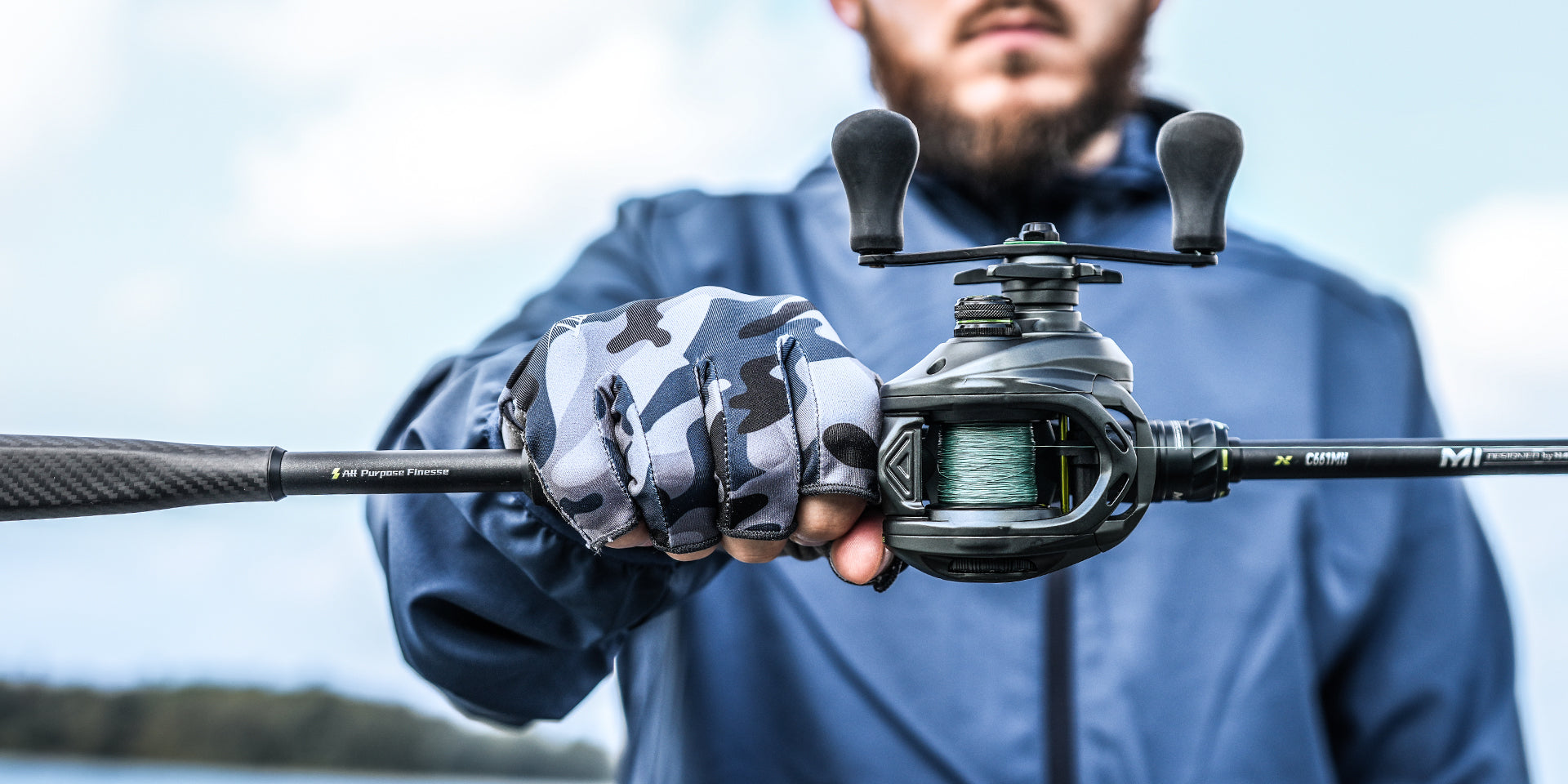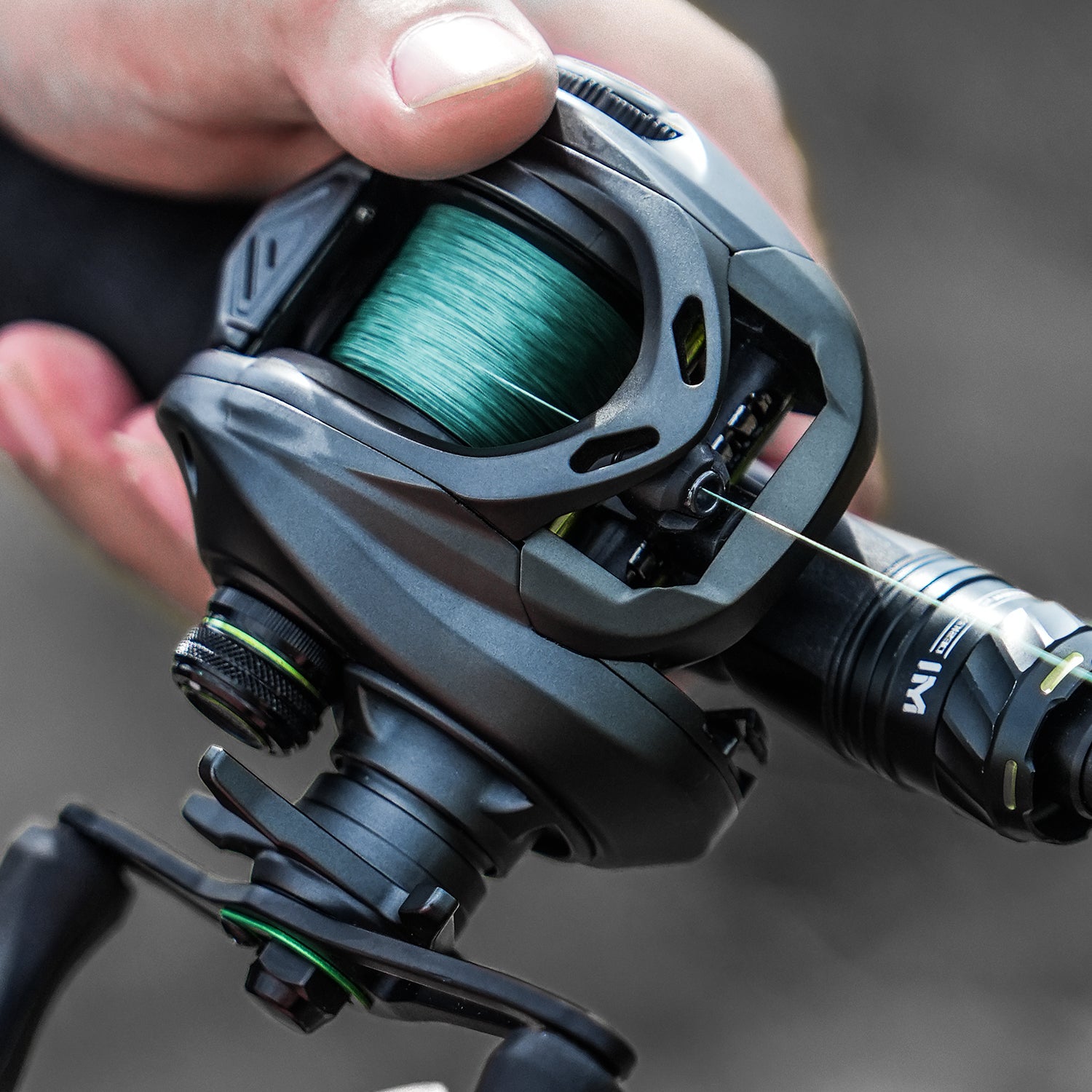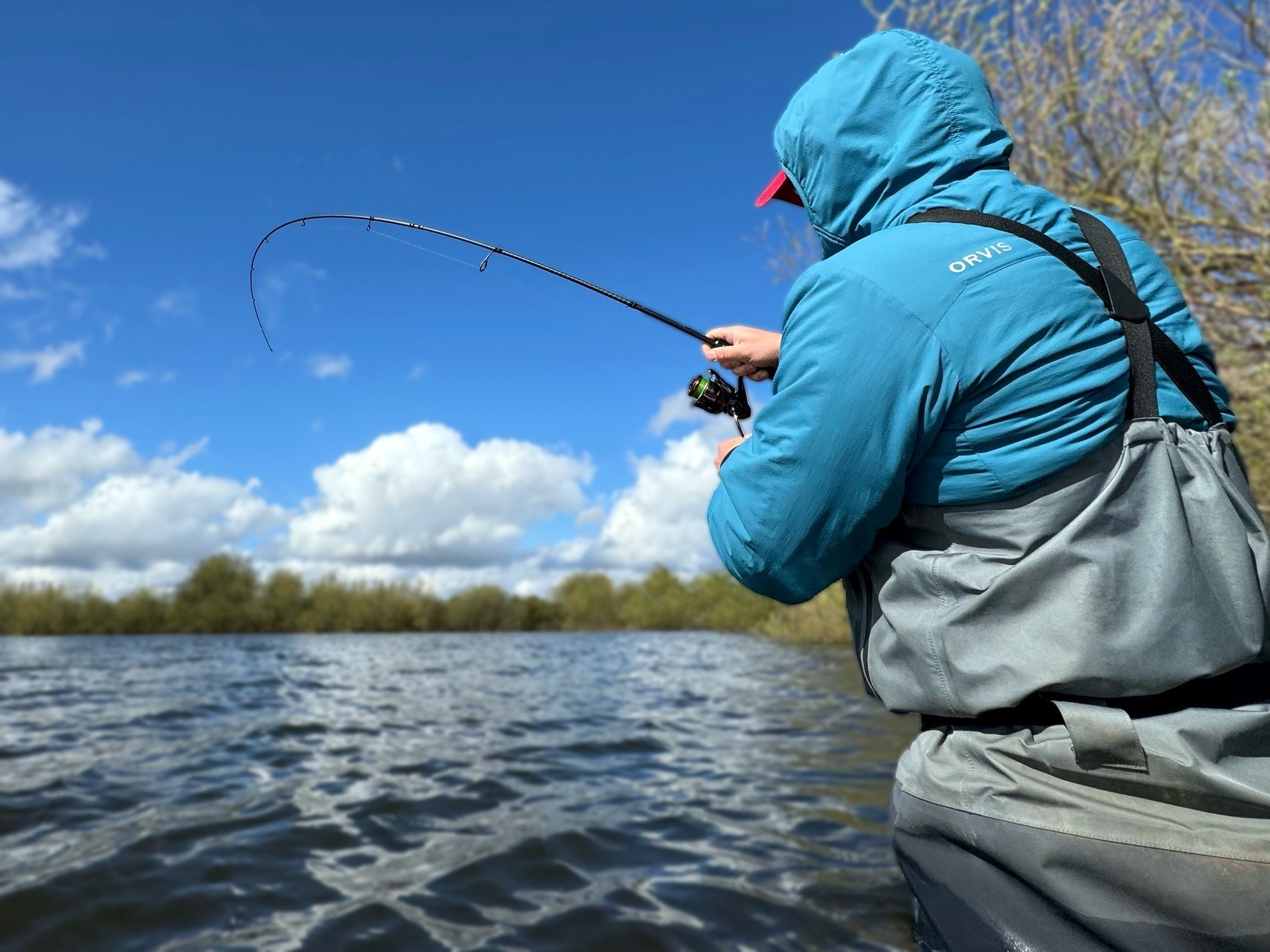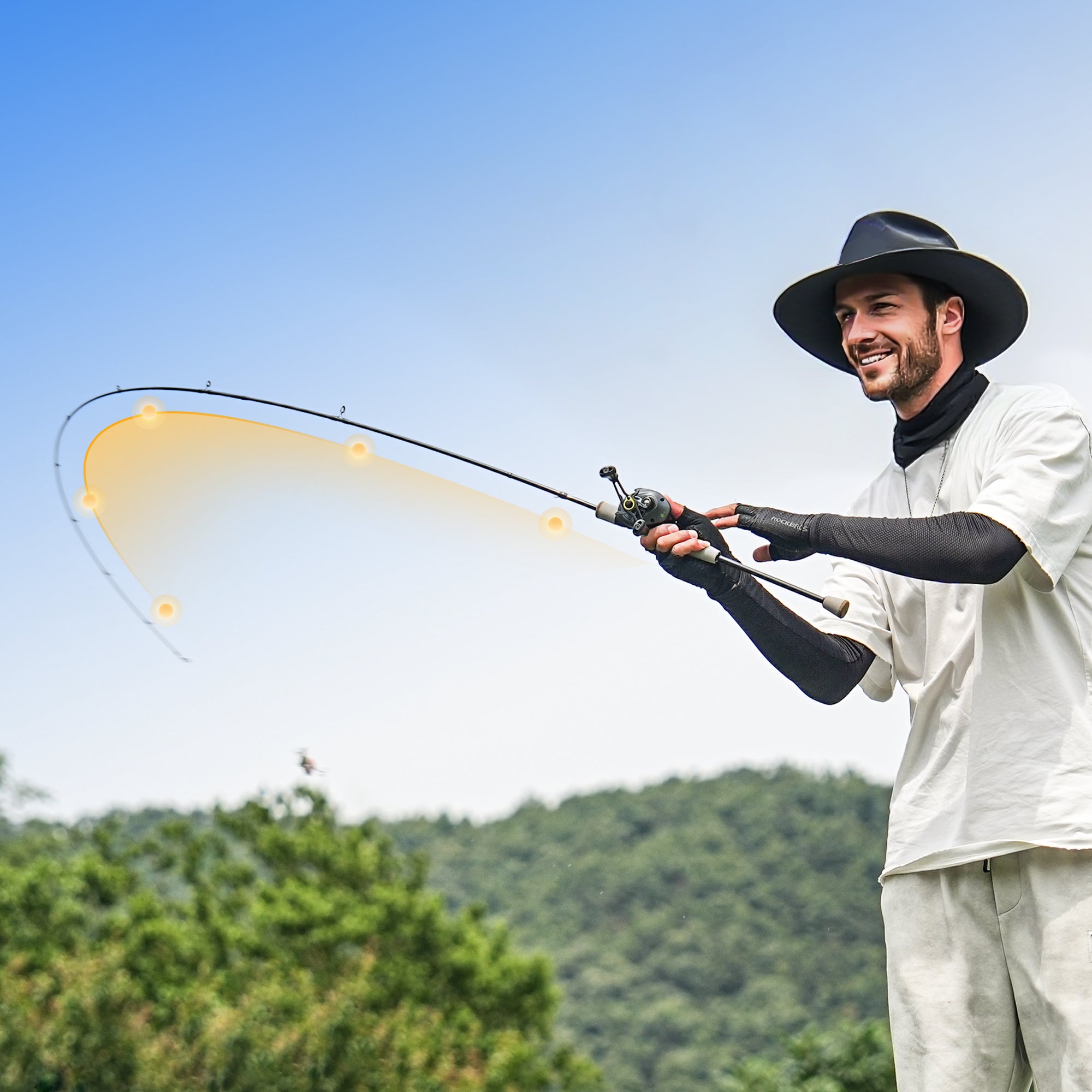Any store that sells fishing gear will have a wall full of line. It's the most crucial element of your fishing equipment since it allows you to connect with the fish. The problem is that there are so many choices that it's simple to feel confused. In freshwater, monofilament, fluorocarbon, and braid are the three main types of line. Each is useful in its own way, and making the correct choice at the appropriate time may transform a dreary day into an unforgettable adventure.
The Old Reliable: Monofilament
Monofilament, or "mono," is the line most of us grew up with. It's the classic, all-around workhorse of the fishing world. Made from a single strand of nylon, it’s known for being user-friendly and easy on the wallet, making it a great choice for beginners and seasoned anglers alike.
Its most well-known quality is that it can stretch. Imagine it as a shock-absorbing bungee cord. As a huge bass or catfish makes an abrupt dive, the line gives slightly to prevent the hook from ripping out of the fish's jaws. When using fishing lures with treble hooks, like crankbaits, this forgiveness is very helpful because it keeps the fish pinned during a rough fight. Simply because mono floats, it's the best line for topwater lures like poppers and frogs because it helps them stay where the action is.
Of course, that stretch is a double-edged sword. It dulls the sensitivity, so feeling a subtle bite in deep water can be tough. Mono also has memory, meaning it tends to hold the shape of the spool. This can sometimes cause it to spring off your reel in unruly coils, leading to tangles and shorter casts. It also breaks down in the sun over time, so it's a good idea to replace it every season.

The Invisible Option: Fluorocarbon
Fluorocarbon is all about stealth. Its material has nearly the same refractive index as water, which is a fancy way of saying it becomes practically invisible underwater. When you’re dealing with line-shy fish like trout in a crystal-clear stream, this "invisibility cloak" can be the difference between getting a bite and getting ignored. For this reason alone, it’s a favorite for making leaders to attach to more visible main lines.
But fluoro offers more than just stealth. It’s much denser than mono, so it sinks. This is a huge advantage when you want your jig or plastic worm to get down to the bottom quickly and stay there. It also has very little stretch, making it incredibly sensitive. You can feel every pebble your lure bumps into, which means you’ll also feel the faintest of bites and get a rock-solid hookset. To top it off, its hard finish makes it tough as nails, resisting nicks and scrapes from rocks and stumps.
The downside is that fluorocarbon can be a bit high-maintenance. It's stiffer than mono, and if you use a heavy pound test on a spinning reel, it can jump off the spool and create a bird’s nest. It’s also the priciest of the three, so it’s more of an investment.
The Powerhouse: Braid
Braided line is the superhero of the fishing line world. Made by weaving together super-strong synthetic fibers, braid offers incredible strength in a remarkably thin package. A spool of 20-pound braid might be as thin as 6-pound mono. This skinny profile lets you cast a country mile and pack a ton of line onto your reel.
Braid’s defining feature is its absolute lack of stretch. The connection is so direct that you feel everything instantly. This incredible sensitivity lets you detect even the slightest tap from a cautious fish. When you set the hook, all your power transfers directly to the hook point with no energy wasted. This raw strength makes braid the undisputed king for fishing in heavy cover. If you need to haul a bass out of thick lily pads or pull a catfish away from a logjam, braid is the line you want.
That power comes with a few quirks. With no stretch to absorb shock, you need to use a looser drag or a more flexible rod to avoid ripping the hook out of a fish's mouth. Braid is also highly visible underwater, so it’s almost always used with a mono or fluoro leader. Tying knots can be tricky too; its slick surface requires specific knots like a Palomar to keep it from slipping.

Matching the Line to the Job
For Bass on a Spinning Reel:
When chasing bass, the right line really depends on your technique. For all-around versatility on a spinning setup, it’s hard to beat braid. A 10 to 20-pound braid is thin, casts great, and is super sensitive for finesse tactics. Just add a fluorocarbon leader for stealth, and you’re set for most situations. If you're throwing frogs into thick slop, you’ll want to spool up with heavy 50-pound braid to winch those fish out. But if you’re tossing a crankbait, switch to a 10 or 14-pound monofilament; its forgiving stretch will help you land more fish.
For Trout on a Spinning Reel:
Trout have famously good eyesight, so stealth is key. The best fishing line for trout spinning reel setups is almost always a light fluorocarbon. A 2 to 6-pound test fluoro disappears in the clear water that trout love, giving your lure a much more natural presentation. The sensitivity also helps you detect their often-subtle bites. If you prefer something more traditional or budget-friendly, a 4-pound monofilament is still a great choice, especially for casting spinners and spoons where a little give in the line can be helpful.
| Line Type | Best For | Good to Know |
| Monofilament | Topwater lures, crankbaits, general-purpose fishing. | Forgiving, floats, affordable. |
| Fluorocarbon | Finesse techniques, clear water, fishing near the bottom. | Nearly invisible, sinks, very sensitive. |
| Braid | Heavy cover, long casts, high-sensitivity techniques. | Extremely strong and thin, no stretch. |
The Final Cast
There’s no single "best" line that covers every situation. The real secret to success is to treat your line as a vital piece of your fishing gear arsenal. Having a couple of fishing reels spooled with different types of line prepares you for anything you might encounter on the water. Choosing the right tool for the job doesn’t just make fishing easier—it makes it a whole lot more fun.







